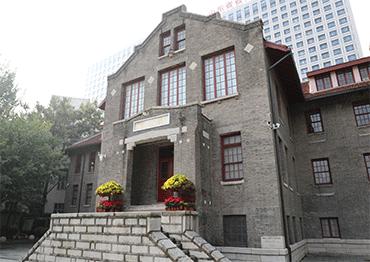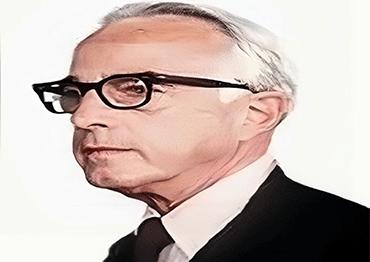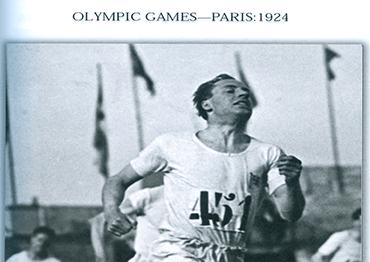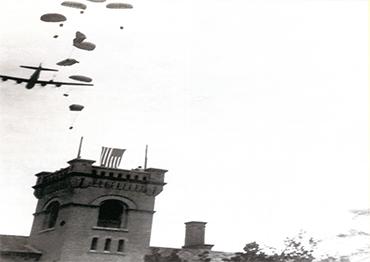One of Liddell’s first initiatives was to organize sports events, using them as ways to boost morale and foster camaraderie. He encouraged participation in games and races, creating brief moments of joy and distraction from the harsh realities of camp life. Liddell also taught the camp’s children who were deprived of formal schooling. Lacking resources, he wrote lesson plans by hand and created makeshift textbooks to teach subjects like chemistry and mathematics. His classes were held in cramped quarters, with wooden crates used as desks and benches. Liddell’s dedication not only provided the children with education but also a sense of normalcy and hope for the future.
Even as his health deteriorated due to malnutrition and stress, Liddell continued to give selflessly. He worked tirelessly to comfort the sick, console the grieving and mentor the young, all while enduring the same deprivations as those he served. In February 1945, just months before the camp’s liberation, Liddell succumbed to a brain tumor at 43. His final words were reportedly expressions of gratitude and faith, embodying the selflessness and hope that defined his life.
Liddell’s death was a devastating loss to the camp, but his legacy lived on in the hearts of those he touched. His story, immortalized in Chariots of Fire, continues to inspire people worldwide. At the Weihsien site, a memorial sculpture honors his enduring impact, reminding visitors of the extraordinary life he led.
The story of the Weihsien camp is not only one of suffering but also quiet heroism. Under the watchful eyes of guards, acts of resistance flourished. Villagers risked their lives to smuggle food and messages into the camp, demonstrating the solidarity between local communities and the internees.
Among the most daring acts of defiance was the 1944 escape of Arthur Hummel Jr., a young teacher and scholar of Chinese who went on to become the second US Ambassador to China, and Laurence Tipton, manager of the British American Tobacco Company.
This meticulously coordinated escape involved Chinese resistance fighters and other internees, notably Raymond de Jaegher, a Belgian Jesuit priest. The plan was masterminded by a self-appointed committee of internees, who understood the camp’s vulnerabilities, and was facilitated by Zhang Xingtai, a villager who cleaned the camp’s cesspits. Crucially, de Jaegher volunteered to oversee the cesspit workers, enabling him to smuggle messages in and out of the camp.
Zhang, along with his son, used their positions to help internees communicate with the local anti-Japanese armed forces. This collaboration became the foundation of the escape. The plan relied on a brief lapse in the guards’ vigilance, typically when Japanese soldiers checked the camp’s electrified fences late at night. During this window of opportunity, the escape team moved quickly and silently.
Also aiding in the escape were Chinese-American Roy Tchoo and Tommy Wade, a British electrical expert. Standing nearly two meters tall, Wade became a literal lifeline for Hummel and Tipton, acting as a human ladder to help them scale the camp’s high walls.
Every movement was fraught with danger. A misstep or a flicker of light from the guard towers could have exposed the operation. Yet, with calculated precision and unwavering determination, Hummel and Tipton made it over the barrier and into the open countryside beyond.
Once outside, the two men faced even greater challenges, navigating treacherous terrain to safety. Guided by Zhang’s instructions and aided by local resistance fighters, they traveled under cover of night, avoiding roads and paths that could lead them into Japanese patrols. Their destination was Sunzheng Village, a stronghold of anti-Japanese guerrilla forces in Pingdu County. The journey was grueling, testing their endurance and resolve. Hunger, fatigue and the constant threat of discovery loomed over them, but the promise of freedom kept them moving. When they finally reached Sunzheng Village, the resistance fighters provided shelter and protection.
Hummel and Tipton’s escape was not only a personal victory but also a significant morale boost for the camp’s internees. News of their daring flight spread quickly, serving as a powerful reminder that resistance was possible, even in the harshest conditions. Their story became a beacon of defiance against tyranny.
On August 17, 1982, during Hummel’s tenure as US Ambassador to China, the US and China signed the “August 17 Communique,” laying the foundation for their bilateral relations. Decades earlier, the same date marked the liberation of Weihsien Internment Camp.
From 1942 to 1945, the residents of Weihsien risked their lives to assist Western internees, demonstrating extraordinary courage and sacrifice. As the war progressed, conditions in the camp worsened, with food supplies dwindling. To survive, they bribed Japanese guards with money, and when funds ran out, they bartered luxury items such as clothing and jewelry. Eventually, many were left with only tattered garments.
One artifact preserved in the Weihsien West Civilians Concentration Camp Site Museum is a bed frame by makers Dakin Brothers London. Originally made with wire and later modified with wooden slats, it was part of a trade between a Danish internee and Han Xuting, a local villager. In early spring 1943, Han, under cover of night, approached the camp’s western barrier.
He smuggled 1.25 kilograms of sugar and 2.5 kilograms of eggs to the internees. Fifteen minutes later, Han retrieved the disassembled iron bed frame – weighing around 25 kilograms – using a long pole. He then carried it 2.5 kilometers back to his home, navigating fields in the dark.
In 2019, Han Chongbin, Han Xuting’s son, donated the bed to the museum, preserving this remarkable story of resilience and solidarity.
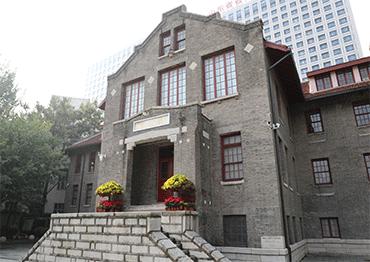
 Old Version
Old Version
